Behind the Scenes… with Steve Scotcher
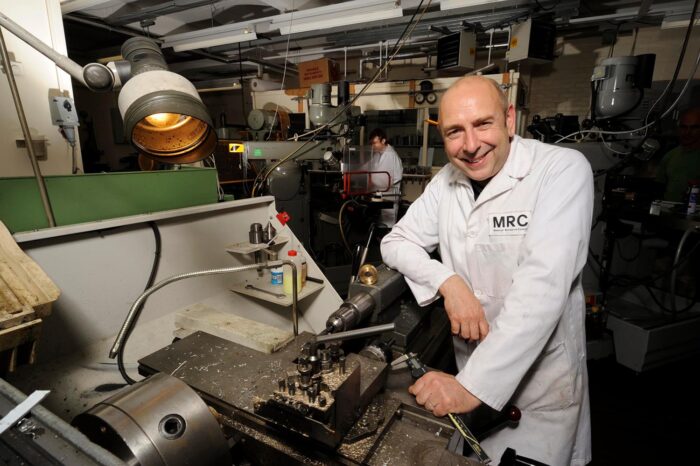
Steve Scotcher is currently the Head of the Technical Instrumentation Workshop (often called the Mechanical Workshop), and he has held this post since 2010. He joined the LMB as the Workshop cleaner in 1982 after completing an apprenticeship qualification (and a short stint as a vehicle dismantler). He is now one of the longest serving members of the Lab.
Here, he shares some of his recollections of his time at the LMB and how the workshop has changed and modernised over the decades.
Technological Improvements
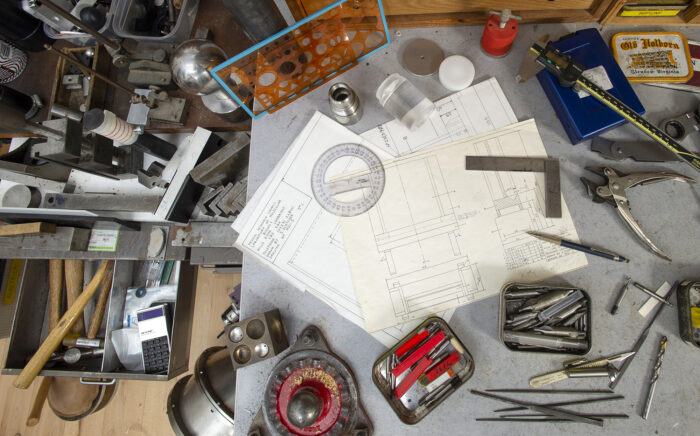
Before a new piece of equipment or machinery can be made, we first need to nail down the design. When I first started in the workshop we drew them using a drawing board and pencils – or on graph paper if we were being especially lazy. In the late 1980s, we got our first CAD (Computer Aided Design) system, using a BBC micro computer, which we used to plot the drawings. These improved in the 1990s, and PCs were introduced as a faster alternative to the BBC micro, which only had 64K Ram. Today, computers are super fast, and we can actually model parts in 3D, and where necessary print them in 3D, before we cut any metal. This gives our customers the chance to see how we intend to design a piece of equipment, which makes us far more efficient.
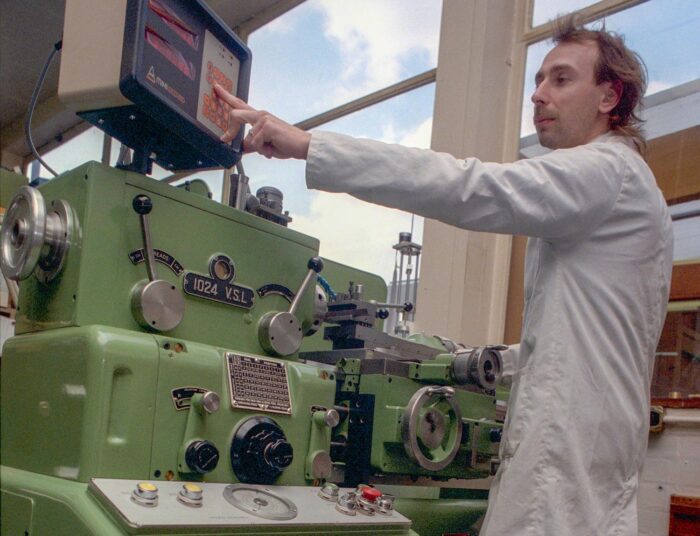
As well as CAD system improvements, the workshop has also benefitted from CNC (Computer Numerical Control) machines. The first machine was bought in the 1980s for over £30,000 – the same price as a semi-detached home in the surrounding villages at the time. I got to be involved in bigger projects such as the original pre-production prototype confocal microscope that Mick Fordham, John White and Brad Amos were working on because I was a real wiz on the CNC three-axis Bridgeport milling machine, and I picked it up a lot quicker than some of the older fellas in the workshop. Now, most (though not all) of the machines are CNC, and we use fantastic carbide tipped tools so we don’t have to spend two days grinding up tools to do a specific job. These technological improvements mean that now we’re producing better work and a higher volume of work with less staff, which is probably the biggest change I’ve noticed in the workshop.
Machines, Apparatus and Instruments
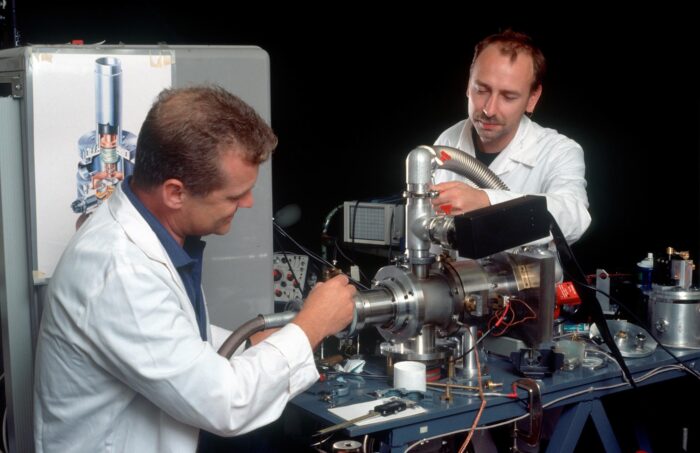
The projects undertaken in the workshop can vary enormously from simple and straightforward components to highly technical, fine instrumentation which require an enormous amount of skill. One of the most difficult projects I’ve worked on was Uli Arndt’s fine focus rotating anode X-ray generator, which was designed for use on the International Space Station. It took years because we managed to generate a stable beam at very low voltages, but had a problem focusing the x-rays. In the end, we actually used capillaries, which was quite novel. An x-ray beam will follow the hole down the middle of a capillary tube so you can move the tube about and aim it for the crystal. More recently, I’ve worked with Richard Henderson and Greg McMullan on various high vacuum test rigs for the new breed of digital EM (electron microscopy) detectors, which is really exciting because it’s current, it’s cutting edge and it’s providing some excellent results. Other highlights include the graphene coating instrument for Chris Russo (used to coat EM specimen grids with a single layer of carbon atoms), and working with Hugh Pelham to detect bacterial infection in the cerebrospinal fluid in newborn babies with suspected meningitis. These projects are particularly staggering when I think about when I first joined the workshop and most of my time was spent making a seemingly endless supply of various gel boxes.
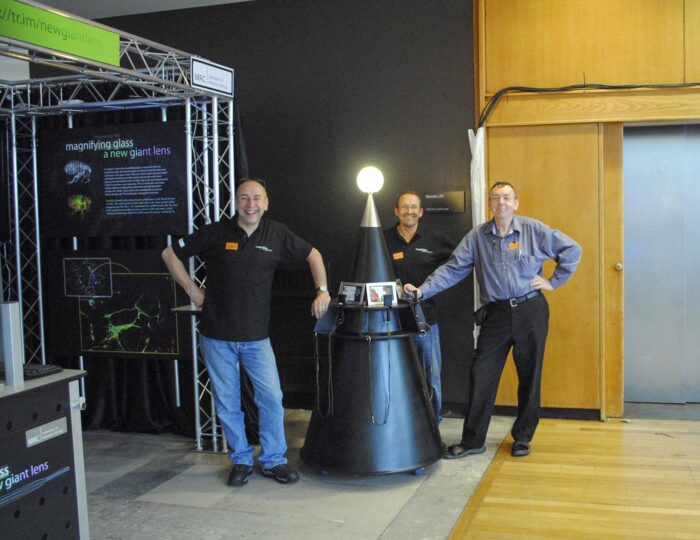
Public Engagement and Other Projects
Over the years I’ve also gotten involved with plenty of other pursuits. In 1988 the whole workshop team dedicated a lot of time to preparing materials for the Science Museum exhibit celebrating 40 years of the LMB. Since then, I’ve regularly participated in other public engagement events, in particular construction of stands for the Royal Society Summer Exhibitions. I also give talks and do displays to students and visitors as part of tours of the Laboratory. My workshop skills have also proven to be useful elsewhere, namely in construction of a killer robot for Robot Wars in 1999, alongside Howard Andrews and Paul Hart. Though ‘RaizerBlade’ was equipped with a petrol chainsaw and a hydraulic lifting arm, it crashed and burned in competition. Not quite the successful TV debut we were hoping for. Finally, though I never seem to volunteer for it, I’ve performed in the annual skit numerous times – thankfully there are no pictures of my infamous ‘Full Monty’ performance.
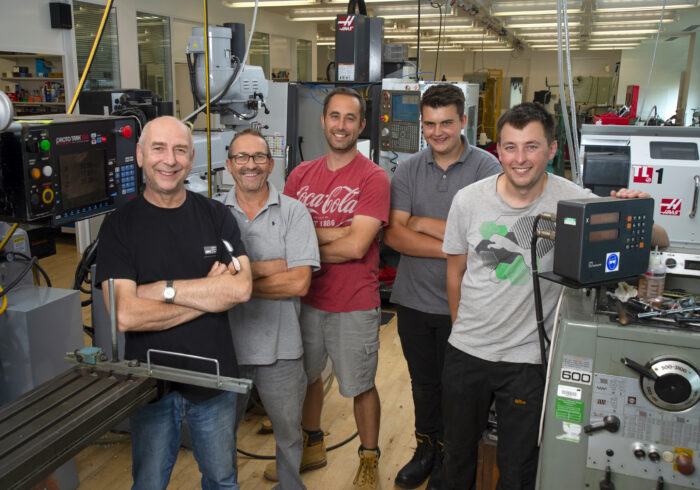
The Workshop Today … And Being Lucky
Now, my day to day work as head of the workshop includes: discussing jobs (or potential jobs) with scientists and/or other staff; feeding these jobs down to the team; ordering materials (and making sure materials are here when a job is ready to start); and looking after the needs of my team. In brief, I make sure that the workshop runs smoothly, efficiently, and that everybody who comes through the door is happy with the results that they get. I’ve always been part of a good team and I still am – it’s not just me that does the stuff, it’s everybody. We’ve got some really exciting, big projects coming up in the near future working alongside the new group leaders in the Neurobiology wing, and I’m looking forward to coordinating these and maybe getting involved in construction – after all, I’m still the best welder here!
I consider myself very lucky to have worked at the LMB for so long. My experience has always been that if you enjoy the work you’re doing, which I always have done, then opportunities arise. Certainly, from a workshop point of view, the work has always been exciting. If you’ve got the right attitude, and you’re in the right post, then I think the MRC is a wonderful place to work. Even though you’re just a small cog in a big machine, you feel as though you’re contributing to everything, which gives me an enormous sense of satisfaction. If someone gets an award, whether it’s a Nobel Prize or they’ve been made a Fellow of the Royal Society, you think ‘Yeah, I helped them get there.’ And that’s been reciprocated back to me through my promotions over the years and extraordinary opportunities, such as meeting the Queen at the official opening of the new building in 2013. Further, having hugely benefitted from an apprenticeship myself, I am particularly proud to be in the position to offer young people an apprenticeship position here in the workshop. I strongly believe that the resurgence of apprenticeships for STEM subjects is long overdue for people like me who may not be academically minded, but are gifted with their hands. Overall, I feel as if I’ve done very well at the LMB, and I consider myself very fortunate that all those years ago I started as a cleaner. It’s been a blast, and I’ve loved every minute of it.
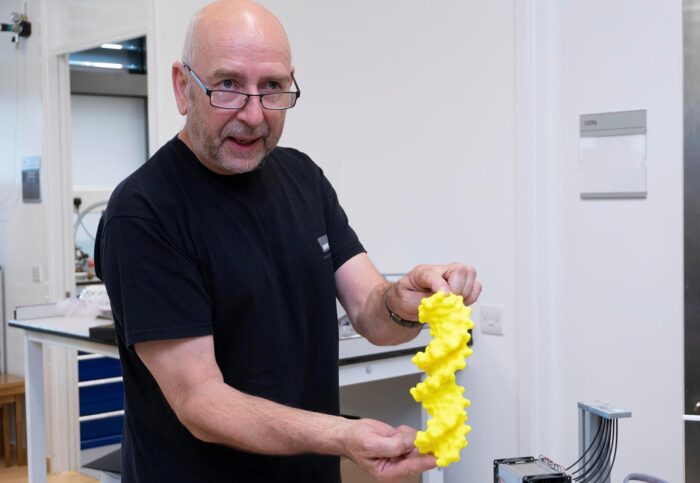
Steve was interviewed for the LMB Alumni Newsletter on 28th November 2019